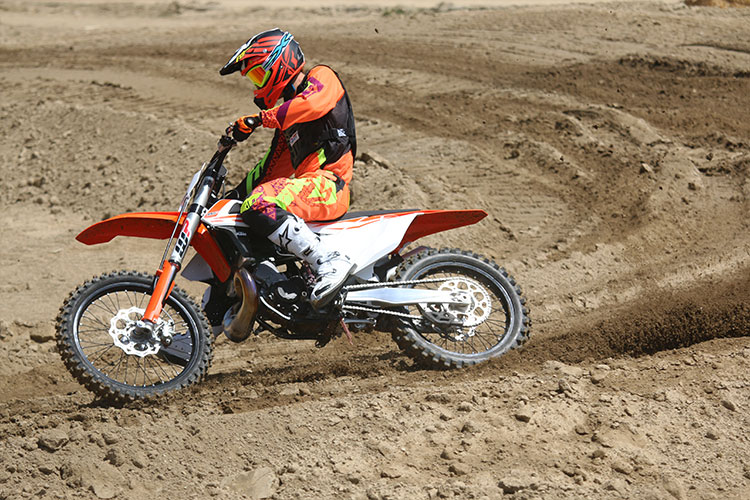 Photos by Jimmy Lewis and Connor Green
Photos by Jimmy Lewis and Connor Green
KTM is pushing forward with two-strokes and we got to ride their newest creating, KTM’s 2017 250SX. With the popularity of the 250/300cc two-stroke platform worldwide, it was time for the next generation. In their words they were going for “faster, lighter, stronger.” Looking at it from a customer perspective it was high time for an update. The last time Katoom had a new engine it was 2011 and before that in 2007.
The big news is everywhere. The powerplant is all-new with an altered slant on things. The position of the shafts and the angle of the cylinder and design changes that have been seen in other displacement sizes across the KTM two-stroke line. There is also the addition of a counterbalancer, which runs off the primary gear and has weights on both sides of the engine up near the reed block enclosure to reduce vibration. Overall the reciprocating weight stayed the same with a lighter crank and flywheel in the new motor. Mikuni handles the carburetor now. 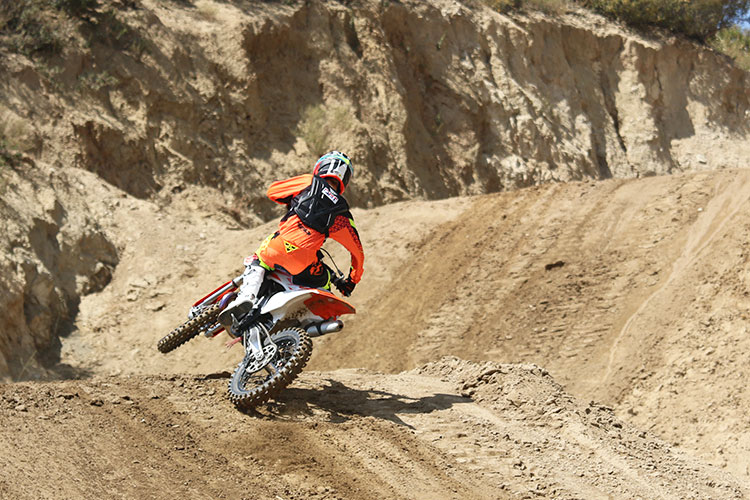
The chassis is also new mirroring the chassis on the four-stroke SX line. A lot of attention went into attaching the motor through the headstays. Everything is flatter, lower and thinner in the bodywork. The suspension has also been revised as well with the jump to an air spring fork in the WP AER48. Shock and linkage changes round out the package with a refined swingarm extrusion. The top bar mount of the tripleclamp is now a one piece design with rubber mounting.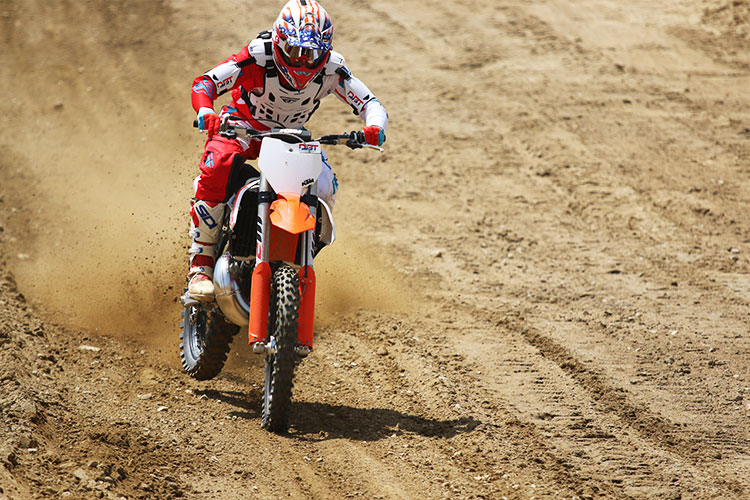
It did not take long once we got on the bike to figure out what stood out . The vibration is definitely minimized. If you notice this kind of thing you will really notice it on this bike. Even riders who were less critical of the vibration said the bike just felt smoother. It has a characteristic–power with a long pull, which is common to KTM two-strokes. Now there is added hit and boost off the bottom and onto the mid-range transition. It is enough where you get the hit with just throttle and on the older model it required a blast of clutch in comparison. Overrev is long and the sign-off is gradual, not abrupt. If we were to give it power claims, we’d put it better than the old motor in torque everywhere with a noticeable increase in power on the bottom. This without losing any pick-up or excess wheel-spin either. In the upper mid and top the power is very similar to the old motor with a slight advantage to the new one in power at peak. It also seemed more resistant to stalling though some of this could be attributed to the changes in the rear brake.
The jetting on the new Mikuni carb was pretty good, especially for faster or riders who don’t modulate the throttle much, especially on the first quarter throttle. Some of our more precise riders (read; slower/older) found a rich/lean spot right about the time it felt like the powervalve opened. Going to a one clip position leaner needle setting cleared this up completely but it also made the bike feel a little less impressive in the mid-range. We were told there is another needle or possibly a different nozzle that should cure this and make better power too.We’ll try that when we get a chance.
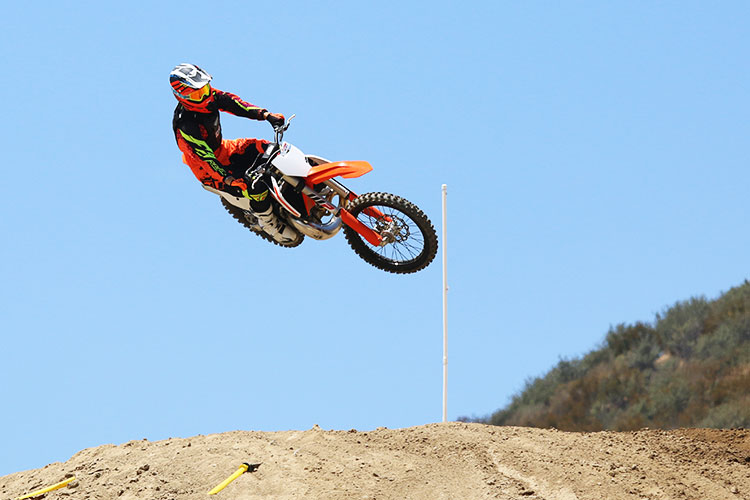
The clutch is as good as ever and seems to have improved control, especially with excessive use slipping while railing ruts in a gear high. The transmission gear ratios and shifting seems sold as any bike, even at a very fast Glen Helen National track. The kick-start only bike fires right up and the cases have not been machined to accept any sort of electric starter on this bike.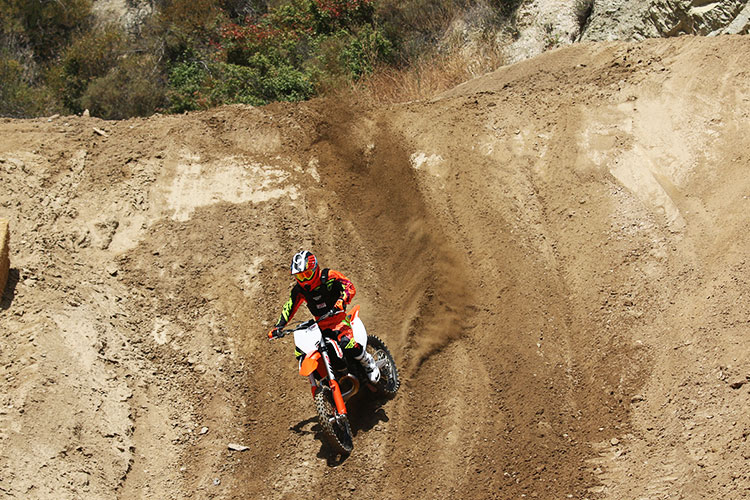
With regard to the chassis, there is a big difference in weight and feel of the bike, largely from the 3.5-pound drop from just the fork alone. But the new chassis gives the bike a very planted yet lively feel. It makes the old bike feel sleepy and lazy in comparison when it was anything but that. That may be the biggest noticeable change. It is almost, dare we say, like a 125 in flickability. We found the ride to be really planted for a light two-stroke with minimal dance but the ride height is critical. Don’t let it get too low or the handling goes out the window. 110mm is as low as you should ever let it go, 105-107 seemed our magic number. We played with the settings and were advised to tune the clickers on the fork before going to air-spring changes. Right off the bat we are pretty impressed with the WP air-spring fork but we have been favorable to air forks all along because we feel they work when you understand how to set them properly. Some riders were happy with the balance as is and some were wanting to play with the setup a little more. There are changes to the fork for 2017 from 2016.5 and the world bikes last year that dropped additional weight with some internal material changes and also a new tapered outer shape tube on the upper fork.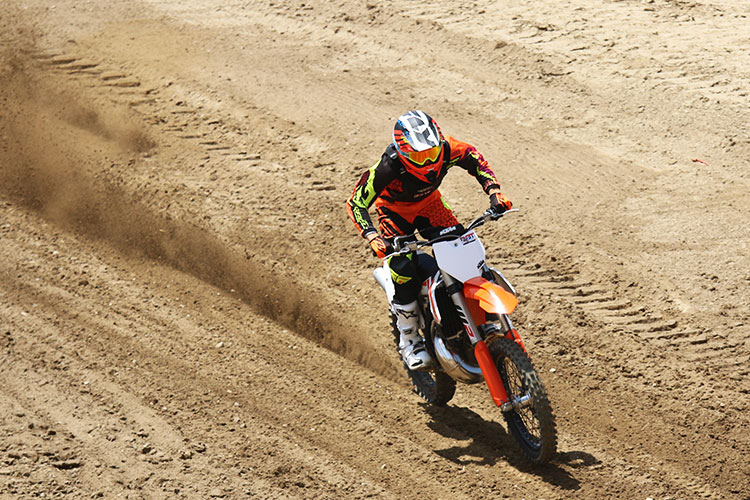
Down to the nitty gritty and KTM really looked and tuned the rear brake. To make it worse. Yes, they firstly reduced the grip of the pads on all of the 2017 SX range. But that wasn’t enough so the 250SX gets a longer pedal that allows more modulation. Simply, it works better at being less grabby and gives the rider more control. Bonus is less stalling.
Our first ride on this bike has us pretty excited. KTM have definitely raised the bar another level for two-stroke motocross–wherever that is going. We don’t care we mostly ride for fun and this bike is all of that. And it shines light on how good the XC and XC-W 250 and 300 may just be.
The bike should be available in dealers as soon as mid-June.
We will be making some updates to this story as we get some more time on the bike leading up to the full test.
If you have questions feel free to ask them in the comments below and we will do our best to answer them here or in our full test.


6 Responses to “2017 KTM 250SX First Riding Impression”
Dave Grunklee
so the new mikuni has no metering rod or anything special as some folks thought? The talk was of less need for jetting changes for temps/altitude…hmmmm.
Jimmy Lewis
No it is a very common and simplistic Mikuni. There is not much more development going on in carbs save for some small companies that feel there is a better way to do it. But trust us the carb is easy to get to and if you understand jetting a simple way to tune if needed.
Jimmy Lewis
We will put it on our scale soon but KTM’s numbers have been spot on. And who’s dyno do you want numbers from? They are all different so a little hard for comparison. We’d guess it is the same or just a little more than before. 50HP is the number that gets thrown around.
Jimmy Lewis
Way better! Air is way more progressive.
Jimmy Lewis
We did not change much in the suspension. It was very good especially the fork.
Jimmy Lewis
Plenty of power and a lot has changed since 2001…